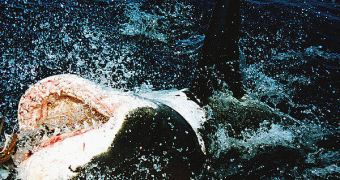While observing the behavior of Great White Sharks killing seals off the coasts of South Africa, wildlife experts were surprised to learn that the animals seemed to have a hunting strategy well set in place, which they rigorously followed, and that yielded them immediate return. The sharks would select an area from which to hunt, and then roam the surroundings in search of their prey. The find demonstrates that they don't just roam the oceans looking for an easy meal, but that they take the challenge of getting sustenance very seriously, and go to great lengths to ensure that they get what they want.
These study results may come as bad news for those of you who already fear sharks. Indeed, researchers say, these animals, apart from being highly efficient predators on their own, also seem to be able to coordinate and support each other's attacks, so as to maximize the amount of food they get from a day's work. In charge of the team that supervised the giant predators' feeding behavior and patterns were University of Miami in Florida (UMF) expert Neil Hammerschlag and Aiden Martin, a scientist at the University of British Columbia (UCB).
Seal Island, the place where the observations were made, is located in False Bay, off the coast of South Africa. Researchers recorded no less than 340 shark attacks within a two-kilometer radius around the island back in 2004, all aimed at seals. Some 64,000 of them can be found in this area of low waters, only 20 meters deep, for distances as long as 50 meters. In these shallow waters, sharks can fully practice their innate hunting skills, chasing and eating any seal that is unfortunate enough to cross their paths.
For each of the attacks, the BBC News reports, the researchers noted the point of attack, and thus made a map of the areas where the seals had been caught. The map also featured the number of successful and unsuccesful attacks, data that were then all handed over to criminal justice expert Kim Rossmo, from the Texas State University (TSU) Center for Geospatial Intelligence and Investigation. She used the same investigation technique on the data that she employs to detect patterns in the actions of killers.
The results revealed that the larger of the sharks had a single point of reference, to which they always returned after a success, and from which they also launched other attacks when the time came. The experts were a bit puzzled at first, because the Great Whites “inhabiting” these points were not maximizing the amount of seals they could have hunted, but they soon came to realize that they were ideal positions, offering the optimum balance between detection and success rates.

 14 DAY TRIAL //
14 DAY TRIAL //